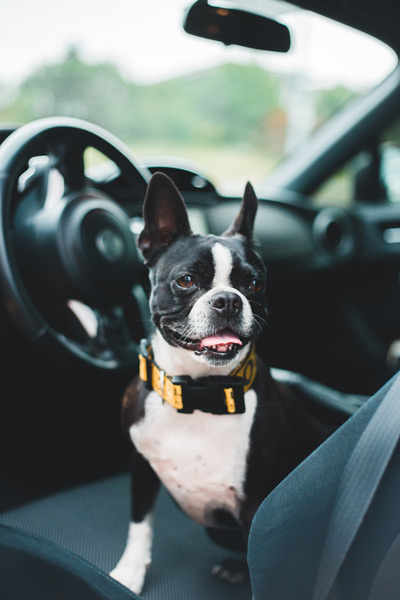
Dog Health & Wellness
A vacation with your dog can be a ton of fun but, it can also cause stress—for both you and your pup—if not well planned.
If you decide to bring your dog along on your next trip, here are a few ways to make your travels as smooth and enjoyable as possible:
Dogs are part of the family. So, it’s only natural you’d want to take your pet with you everywhere you go, including on vacation but, it’s important to plan ahead so travel goes smoothly.

Some pups love being a travel buddy, while others find all the new sights, sounds, and smells—plus the car or plane ride— to be overwhelming.
You will need to think about whether your dog will truly enjoy the trip, or whether it might be better to board them, hire a pet sitter, or have your pet stay with friends or family.
If you do decide to bring your dog along, here are some important things to consider:
Be sure to do your research ahead of time, especially if traveling by plane. Many airlines have restrictions, such as…
If you’re looking into another travel method, such as the bus or a train, you’ll need to check their rules regarding pets on board.

Most airlines require health certificates. And international travel (including travel to Hawaii), may take several months’ worth of paperwork and planning!
Even for interstate travel within the continental US, you may still need a health certificate and proof of rabies vaccination.
For your pet’s health, it’s also a good idea to ask your veterinarian about recommended vaccines and parasite prevention prior to travel.
A microchip is a permanent form of identification—a small chip placed under the skin between the shoulder blades.
Microchips don’t have tracking capabilities, but a chip can help your pet get returned to you if they ever become lost. A special “scanner” (found at most veterinary offices and animal shelters) reveals the chip’s number—which is registered to you as the owner, so you can be contacted.
If you’re not sure if your pet has a microchip—or, if your registered contact information for the chip is not up to date—ask your veterinarian’s office for assistance.
Even if your dog wears a collar and tags, a microchip is still a good idea. Tags can fall off or get lost, but a microchip will always be with them.

During the trip, you’ll need these items:
Your dog shouldn’t be allowed to roam free in the car—this can be distracting and dangerous while driving.
So, try to have a travel buddy or family member along for the ride, in addition to a carrier or pet seat belt. That person can also stay with your dog at rest stops or other times when you may need to leave the car.
If your dog isn’t used to the car, start taking them on short car rides around the neighborhood—or to a fun place like a park—a few weeks before your trip.
Make the experience fun. Offer praise and treats. That way, your dog will see the car as a place they want to be.
The same can be done for a carrier used during a car or plane ride. Make the carrier a safe, comforting place—a place where your pup receives praise and treats.

During your travels, you may need to find pet-friendly hotels, rest stops, restaurants, and other places.
It’s always a good idea to call and confirm pet policies ahead of time. And for hotels, ask about pet fees.
Also, consider looking up nearby veterinary clinics on your route, in case of any emergencies.
Motion sickness—and a car covered in drool or vomit—can make a trip unpleasant for both you and your pup.
Some over the counter motion sickness medications work for dogs—but check with your veterinarian first for a safe brand and dose!
Also, most veterinarians carry an effective, safe, prescription anti-nausea medication. It costs more than over the counter medications, but it works wonders and can make your trip much easier!

Ask your veterinarian ahead of time about calming aids, including:
Test calming aids by giving your dog a dose before your trip. Occasionally, a medication can cause agitation rather than relaxation.
Also bring a towel or sheet to cover your dog’s carrier or the car windows. A dark space can be calming to a dog who’s nervous about traveling. Just be sure there’s good air flow, so your dog doesn’t get hot.
With these tips in mind, you can make travel as stress-free and enjoyable for your dog as possible.
When you reach your destination smoothly, you’ll be able to fully enjoy your time there together!
From our family to yours,
Fromm Family Pet Food